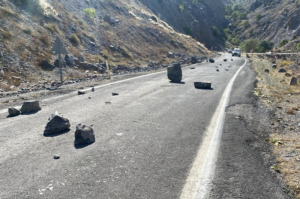
Yemen’s AnsarAlla has issued a threat to cut the fiber optic cables in the Red Sea and surrounding regions, warns Azernews, citing foreign media. The group vows to take this action if the US and UK conduct further strikes on Yemen’s airports.
The targeted internet cables act as vital communication links connecting Europe, Africa, and the Middle East. Disrupting these cables would severely impact global communication networks and have repercussions on international financial markets.
On December 24th, 2023, a Telegram channel affiliated with the Houthis shared a map revealing the networks of submarine communication cables in the Mediterranean Sea, the Red Sea, the Arabian Sea, and the Persian Gulf. The accompanying message stated, “There are maps of international cables connecting all regions of the world through the sea. It seems that Yemen is in a strategic location, as internet lines that connect entire continents — not only countries—pass near it.”
While the statement did not specify a target, the threat aligns with the Houthis’ intensified military actions against ships in the Red Sea since mid-October 2023. Over 100 drones and missiles have been launched at ships passing through the Bab el-Mandeb, disrupting operations. This prompted major shipping companies, such as Maersk, to suspend shipping through the Red Sea and Suez Canal.
One of the threatened systems is the Asia Africa Europe-1 (AAE-1) system, spanning from Hong Kong to Marseille, with a total length of 25 thousand kilometers and a capacity of 40 terabits per second. AAE-1 is part of 16 submarine cables near the Yemeni coast, collectively carrying 17% of global internet traffic.
AAE-1 is a consortium owned by 17 telecom operators, and the regional route in the Red Sea is managed by Egyptian operator Telecom Egypt, with coordination by China Unicom. The Houthis’ threat is deemed credible due to the shallow depth and high concentration of submarine cables in the Yemeni section, making damage likely with a few explosions.
Repairing such damage poses challenges, as repair expeditions could be vulnerable to attacks. Additionally, the threat of subsequent detonations further complicates the repair process, with estimates suggesting it could take several months to years to fully restore connectivity.






Be First to Comment